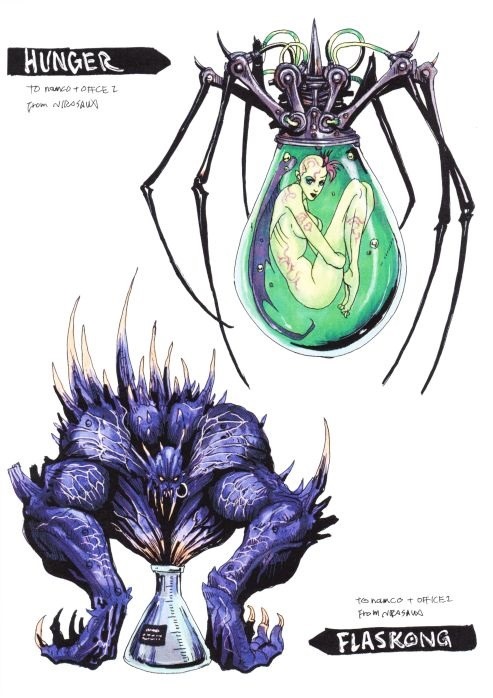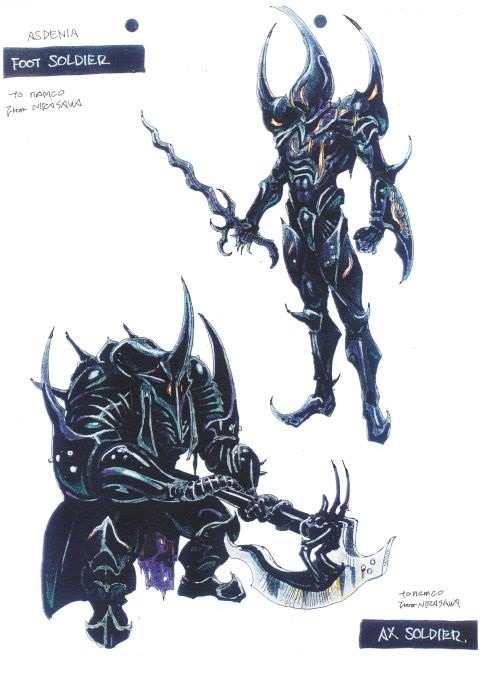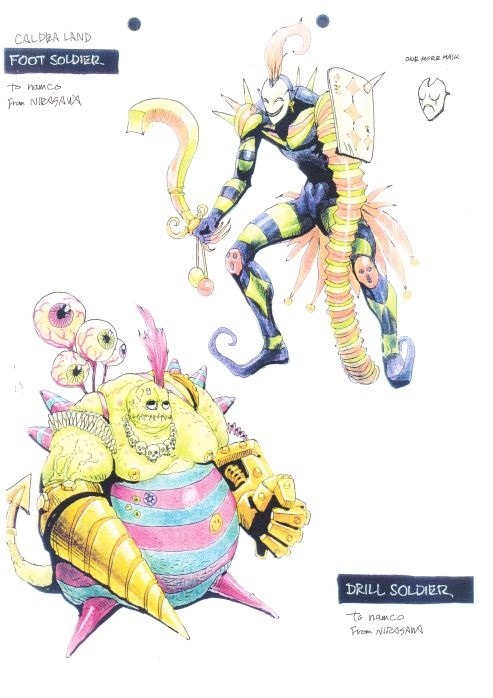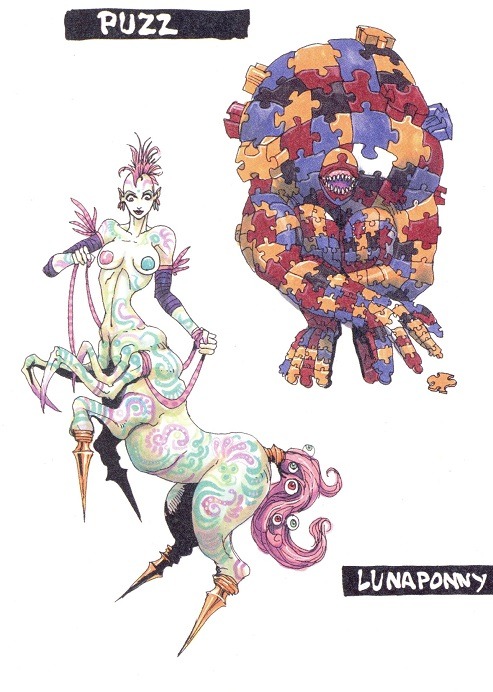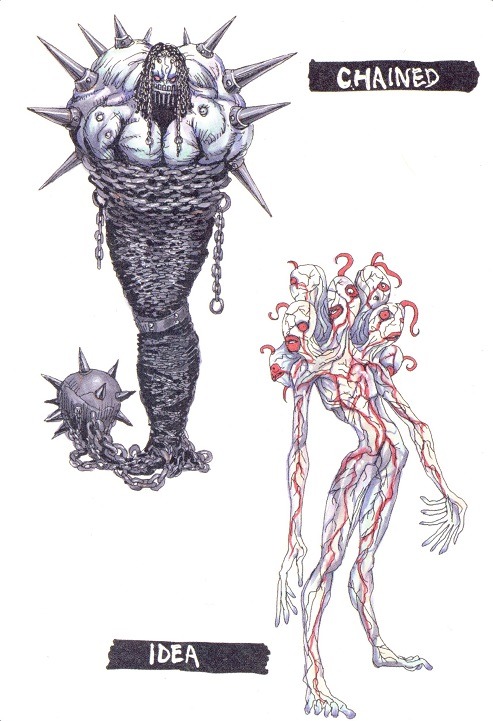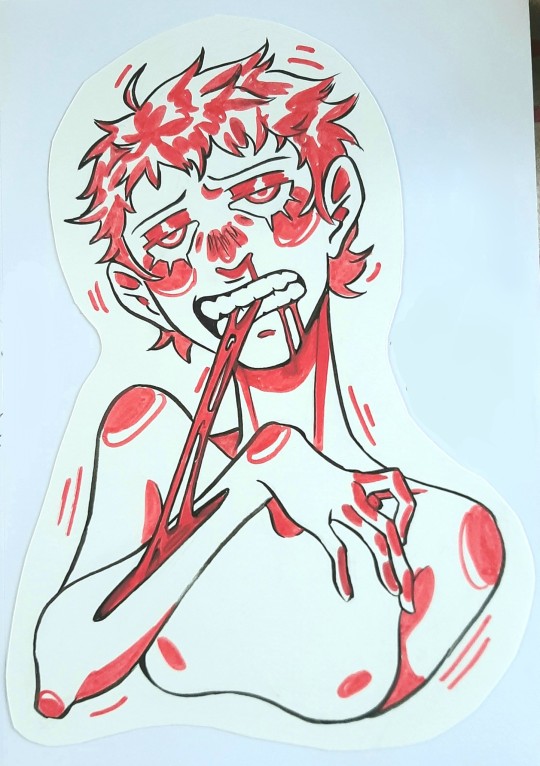Text
literally obsessed with the design of blobjects








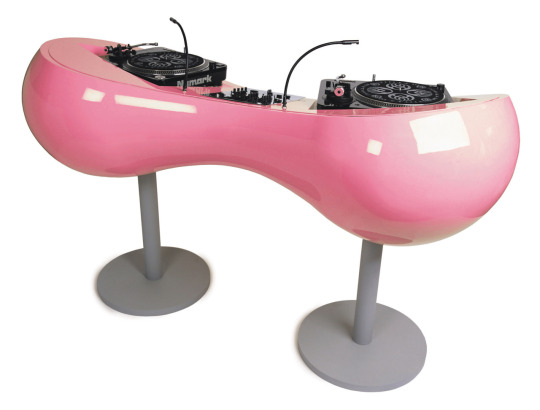

77K notes
·
View notes
Note

It’s been 5000 years
I was JUST thinking about them good lord!!! Thank u so much and kudos for the improvement❤❤❤
7 notes
·
View notes
Text
ATHF/Ranfren/DHMIS/Hylics/TADC/HLVRAI/Homestuck
• Absurd comedy
• Laws of the world/lore being unclear, nonexistant or everchanging (most characters are chill with it)
• Most if not all characters being morally grey at best
• Death/Injuries being frequent but inconsequential or disregarded
• Artstyle/chara design all over the place
• Gets randomly serious and deep
2 notes
·
View notes
Text
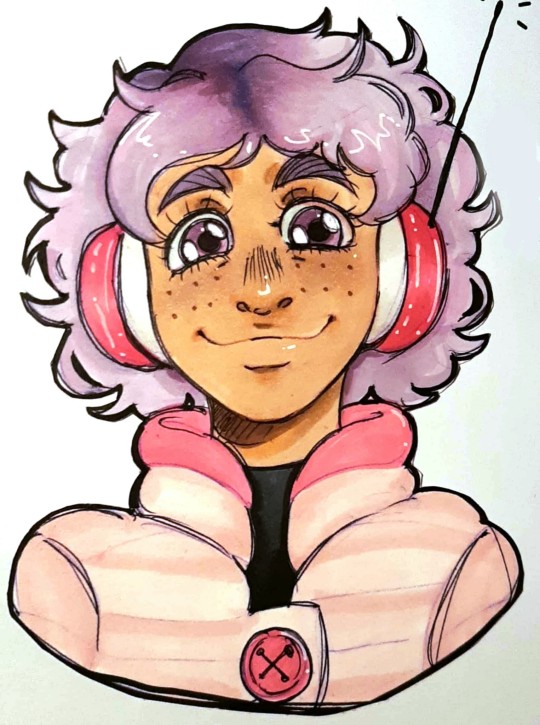
Quick Radio before bed!
Im love her :']
81 notes
·
View notes
Text

Art block momentarily vanquished thanks to unhinged man
133 notes
·
View notes
Text
The Vaults of Zin
Sforzinda, the Encircling City, colloquially referred to as “Zin” is a fractal superstructure, layered strata of glass, metal and stone akin to some titanic building that plies the sky over the corpse of the world. Kilometres of infrastructure reach in all directions, an endless confusion of chambers, passages and staircases forming a three-dimensional lattice in a maze of urban sprawl and industrial wastes.
Throughout this mammoth complex, intelligent computers oversee autonomous factories birthing homunculi, living machines, that haunt the wastes within their impenetrable walls. Alongside them, these facilities continuously churn out the construction drones needed to keep these colossal systems of infrastructure from collapsing in on themselves.
If such facilities are the nerve centres then the flow of water between them is the lifeblood of Zin, moving in regular cycles of heating and rising from the hot, nighted depths, cooling as it goes to fall upon the expanse of its upper surface, only to flow downwards once more. These cycles are the basis of chronological reckoning as water flows rise and fall over time and where they gather life has arisen, their pathways becoming the foundations of what passes for civilisation skulking around in the filth and dark.
Almost exclusively, the inhabited places of Zin, whether on the surface or within, are the relatively stable environments near water supplies.Confused but predictable, the routes between them are painstakingly charted as safe ways warp over time into trap-filled snarls.
Beyond these are the alienated environs twisting through the congeries of lawless, clustered catacombs, sewers and waterways comprising the Vaults of Zin. Like an extended gutter, a labyrinth of unnerving angles and ever-shifting pathways crisscross below the landscape above, filled with pitfalls and artefacts that defy sense.
The Metropole is but a single, self-contained region amidst the benighted turmoil, a mountainous cityscape of co-opted apparatuses suspended within the all-encompassing conurbation that is Zin. From these facilities are grown the staples on which the populace rely, while the sprawling transport system used by its drones carry people, provisions and materials destined for work and recycling at adjoining foundries.
Built as a redoubt against the encroachment of the plague-bearing clouds during the final days of the last war, the Metropole looms as a beacon of unification between bitter enemies in the face of certain death brought by banks of miasma. Safe behind its walls, the light of the White Flame burns away the poison on the air, while beyond, refugees beg for succour amidst the howls of the dead.
Within the urban wilderness of the outermost strata, so besieged, remains yet a patchwork of communities that have coalesced amidst automated processes and untamed tracts of origami architecture. For most of these, time is spent labouring to feed the endless needs of the Metropole and its infrastructure in exchange for safety in the shadow of the Flame, alongside clean water and food from the Metropole’s agricultural factories and the promise of citizenship for themselves or their children.
The vast majority of people know little beyond the relative safety of small holdings, surviving amidst broken masonry punctuated by detritus blown on miasmic winds, piling around chemical pools into mountains of toxic trash which their inhabitants forever scour for the promise of anything that might be sold to the local Exchange. Theirs is a life gathering and refining the materials necessary for the continued survival of the citizens within the Metropole, while others instead strike out into the deep haze in search of caches yet unclaimed.
Areas where the miasma is thick are irradiated wastelands fanning outward from the Metropole, becoming less arid as the landscape begins to shade into foetid wetlands and, ultimately, vast snarls of creeping, clinging life. In contrast to the sterility of the Metropole itself, the lands beyond are places beset by growing things that cluster ever more densely the further one travels from the safety of the Flame.
Worse is the landscape that unfolds beyond the confines of Zin, the endless, frigid place known as the Deadlands, a bleak place dominated by cyclopean structures and shifting monoliths of polyhedral suggestion which hang in the noisome air. The shattered expanses of this desiccated frontier is worn smooth by corrosive sand carried on the constant, howling winds rushing through knife-edged crags, shunned and empty.
Metals are the primary incentive most people have for braving the Deadlands, a rare and precious commodity, as many generations descend from Zin’s relative safety to pick amongst the ruins. At first the purview of specialists trained and outfitted by governing bodies, the growth of industrial demand for new deposits has given rise to a nascent class of pioneering prospectors composed of only the very brave or very foolish who stalk the Deadlands in search of fortune reflected in polished steel.
Still others follow the hushed whispers of strange artefacts, boons from the old world, which will sell for a tidy profit at the Exchange. Chief among these is the rumour of a strange, golden orb or white-walled chamber that, in their finding, will grant the lucky their most ardent wish.
20 notes
·
View notes
Text
Geography
The full extent of Zin’s scale has never been mapped and although many ambitious expeditions have been attempted, its greater depths remain unexplored. For the civilised peoples that inhabit it, the hub of their lives is centred within the region known as the Metropole, a vast complex that sits within the heart of the Narrows at Zin’s leading edge.
Civilisation, such as it is, stands composed of several nation-states banded together by coercion, treachery or treaty, what territories exist between them locked in a perpetual struggle amongst each other to keep themselves relevant. This endures despite the infighting and opportunism which constantly threaten what stability they manage to maintain.
In the shadows of these giants, disparity is the rule of law as the powerful lord their advantages over the disempowered. Prosperity exists almost exclusively amidst the cloistered, monolithic city-states of the Metropole and, within their borders, control is asserted with an iron will.
Beyond these, people live with only a few boons overshadowed by hard labour and early death, where it is not uncommon to find those who make their way by preying upon their peers. Survival of the average person is often predicated on what service they might provide to their betters, most often in the form of salvage brought back from the Deadlands or within the expansive Vaults.
The majority of Zin, both without and within, is itself infested with monstrosities, so, to preserve what order can be gleaned in such an unstable environment, the law, as written by the priests of the Circle, is upheld by Wardens, analogous to military police, who hold the full authority to sentence any lawbreaker. Unfortunately, aside from patrolling the immediate vicinity inside the Metropole’s major territories, these Wardens do nothing to preserve peace in the wilds, even as the beating heart of civilisation, embodied in the economic dominance of the Federation, demands people range ever further beyond the Metropole’s relative safety.
For, beyond the protective gates of the cities, miasma is an ever-present threat, hiding monsters and worse, carrying within its bounds the dreaded silvervein plague. Low-hanging clouds that defy much more description, most who enter the murky depths are lost irretrievably, what survives lucky enough to be put down quickly.
Travel outside major population centres is heavily regulated, routes forced to change as miasma shifts about. Even so, a market does and always will exist that leads only the very exceptional or very stupid to broach the dangers as, whether hunting monsters, scavenging metal or delving for artefacts, opportunity awaits any willing to brave them.
Throughout history, many have tried, and failed, to helm expeditions beyond the Metropole and it is through their piecemeal discoveries that a fuller picture of its meagre totality has been determined. This enormous walled city, although mammoth in its own right, is, in fact, merely the surface-level projection of an enormous subterranean complex spanning in all directions beneath, consisting of roughly 33.09 km2 (12.78 sq mi) at its widest, while the greater territory of the Narrows beyond its walls totals 162.4 km2 (62.7 sq mi).
From here, the expanse of Zin itself is known only in part and largely at its very edges, where its flatter and more arid topography stands in contrast to the increasingly verdant, mountainous regions further towards its centre. Estimates posit a total surface area of 30,528 km2 (11,787 sq mi), of which only about 20% has been remotely mapped and far less explored.
This percentage is made even more insignificant in relation to the total three-dimensional space of Zin, estimated to be about 15 km (9 mi) at its thickest. Even less is known about Zin’s inner vaults than its surface but conservative estimates reckon 1,767 km3 (1,098 cu mi) of inner space that is almost wholly unexplored.
From its outer edges, the climatic regions of Zin range respectively through desert, dry, tropical, temperate, hemiboreal and alpine environs. Wholly beyond Zin, the Deadlands below are a vast, polar, wasteland of frigid temperature and biting winds in which modern technology allows only very temporary habitation.
8 notes
·
View notes
Text
Ecology
The ecology of Zin is a simulacrum of nature predicated upon bioluminescent flora and transgenic fauna, amalgams of cultured flesh and cybernetic grafts. The majority of flora is rendered black by constant twilight and thrives largely through parasitism of large fauna, extracting minerals and metals for harvest alongside more edible fare as strange emulations of fruiting bodies.
As the landscape of Zin is cast in perpetual twilight, this lack of illumination renders photosynthesis a less effective means for most plant life to survive. Plants that would otherwise wither within the constant gloom subsist upon a process of thermosynthesis, converting heat energy rather than light into chemical energy. Many larger plants, analogous to trees, draw energy from electrical storms, passing it throughout their root systems and metallic deposits to other plants in their community.
What can be called fauna ranges from the docility of bovine analogues to the savage predation of man-eating carnivores, insects, avians and so on. Many settlements rely on hunting or more involved barriers to corral less dangerous types. Similar techniques repel the rest from more settled areas, becoming less common the further one ventures from the safety of civilisation.
The most common fauna mostly consists of a complex, but not very diverse community of largely colonial cyanobacteria, algae, fungi, mosses, microorganisms and ferns alongside a handful of simpler creatures similar to deep-sea worms, sponges, and jellyfish. While all life found across Zin is biomechanical, more complex life shows more radical signs of having been engineered, as it would not be able to survive otherwise.
Temperature throughout the vaults of Zin typically ranges between 10-21 degrees Celsius (50-70 degrees Fahrenheit), gradually warming the further one ventures into the depths. Although relatively comfortable, temperatures quickly decrease closer to Zin’s outer surfaces, with the notable exception of the inner reaches of its upper expanse and the warmth generated by the unchecked overgrowth which dominates there.
It is because of this relatively mild climate and a consistent, unshifting terrain that the vaults around the Metropole have become the most populated by sapient species, lacking the hostile biodiversity found further outward while likewise being only mildly affected by the heat within the depths of Zin and the cold that permeates the Deadlands.
2 notes
·
View notes
Text
Historical Overview
After Izabrati Odaran united the northern kingdoms of Redora into his Empire, he set his armies to conquer the southern demesnes of the Dwarven Autarky.
Outnumbered by their more unified human foes, the dwarves mounted an altogether more divided resistance, independent clans leveraging their superior technologies alongside the once-nomadic graven as labourers, now expendable soldiers, to make up the difference in combating whatever enemy encroached upon their cloistered holdings.
With neither power able to make inroads, the sudden advent of rebellion within the graven ranks, led by Tsekisano Ketua against their dwarven masters, saw the war devolve into a quagmire of intermittent conflict as human forces were divided across multiple fronts and the dwarves dug themselves ever-deeper into their strongholds.
The fighting seemed interminable, until the emergence of the silvervein plague, attributed to violation of a dwarven temple during the siege of their capital, which went on to cut a devastating swath through the populations of both nations while leaving only the graven untouched.
In the interest of continued survival, the two powers were faced with a choice, collaborate or succumb to the plague, but it was the death of Odaran Izabrati that marked the ultimate dissolution of the human offensive as his subordinates scrambled to parley.
The dwarves, on their part, were quick to accede, for with their leadership similarly broken and populations decimated, the present threat of a graven uprising had to be addressed before it spilled out into another conflict that they simply could not survive.
To that end, the intervention of dwarven separatists, led by Imara Rakaisa on behalf of the graven people and their human allies, has become held as the shining dawn of a new era for all the free peoples of Zin.
It was the revelations of dwarven alchemy which spurred newfound hope in the besieged peoples, for with the innovative minds of humans and graven came two great boons in the pharmacon to combat the sickness which wracked their bodies and the newfound secret of gunpowder to fell the ravenous afflicted tearing at their walls.
The subsequent accord was cemented in the joint creation of a free economic zone and the founding of the Federated Economic Bloc, meant as an independent territory maintained between the borders of the two great powers and a new seat of the nascent Graven Kritarchy.
A half-century has passed since the war’s end, open conflict between the factions that emerged instead shifting into a contest of exploitation and subterfuge amidst acts of espionage and domestic terror.
During the interim, the imperial states of Redora have become deeply engaged in a project of restoration, bolstered by the cultural, technological and economic advancements coming out of the Zone.
By contrast, the greatest clans of the Dwarven Autarky have seen what remains of their peoples wracked by political schism as many seek to integrate themselves into the new social order while the rest retreat into guarded isolation.
Although tensions remain between them, a masquerade of peace has persisted across the decades that followed, buoyed upon a burgeoning industrial revolution that promises recovery as the populace finds their feet.
In that time, the Zone has become a convenient battlefield where bloodshed has been replaced with engagements of economic rivalry and strained alliances, where the threat of renewed violence planned in meeting rooms and guild halls is played out by proxy in back alleys and streets.
6 notes
·
View notes
Audio
collection of various am noises
1K notes
·
View notes
Text

Wally! WALLY BOI
Him
87 notes
·
View notes
Text
You’re sucking my dick then you look up and I’m giving you analogue horror eyes
23K notes
·
View notes
Text

the little guy of all times ! ! !
2K notes
·
View notes





